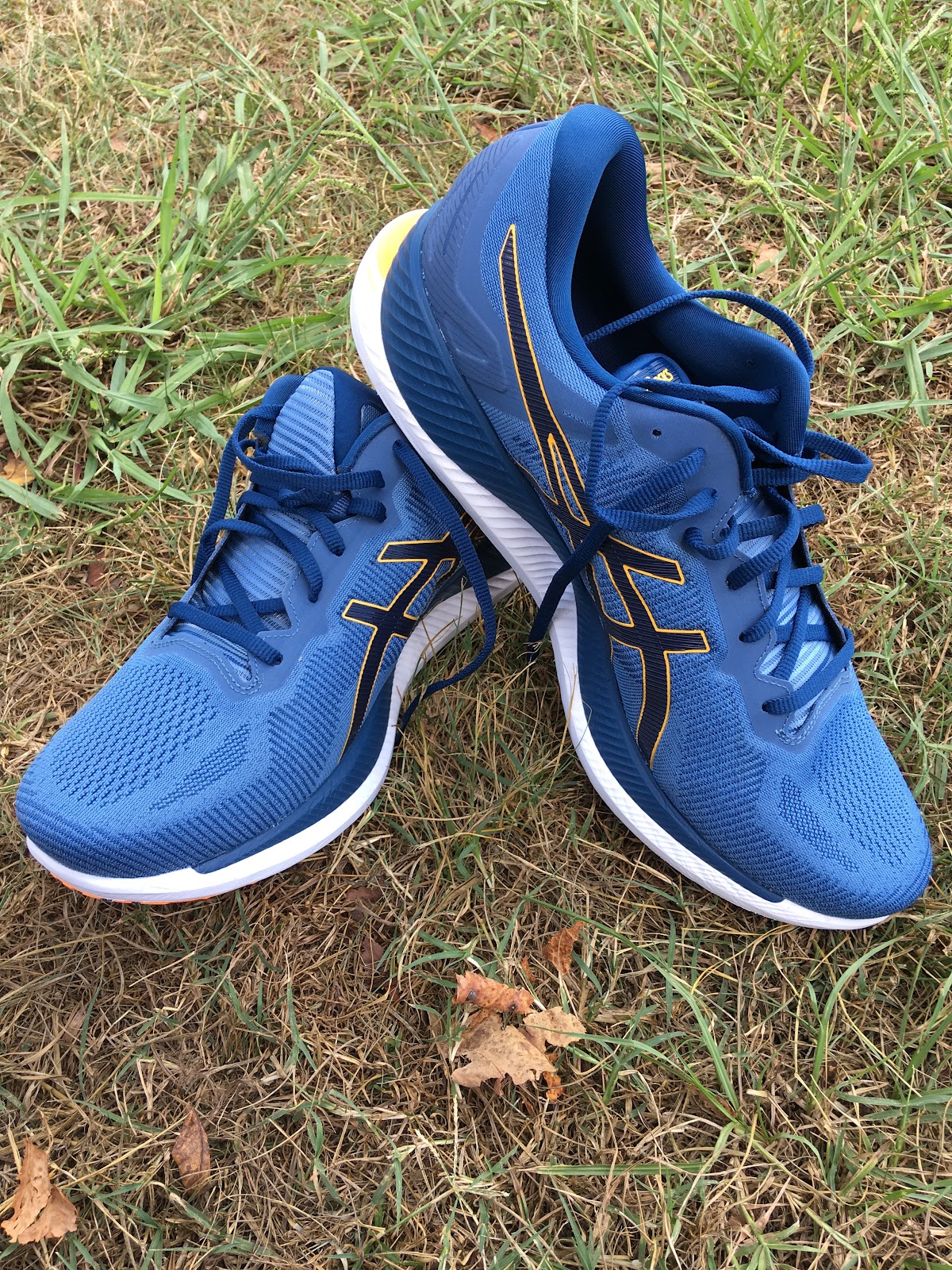ASICS GLIDERIDE ($150)

Introduction
Sam: The Glideride represents a new direction for ASICS, and the future. This stable, maximally cushioned (31mm heel /26mm forefoot), lively neutral trainer features ASICS GuideSole a technology that seeks to minimize lower leg movement and increase energy efficiency through a combination of a stiff and curved midsole platform with a forward rocker geometry, deep decoupling groove and EVA propulsion plate.
The science behind the overall GuideSole approach:
- Reduce the energy taken away on heel strikes
- Improve propulsion by optimizing efficiency (primarily for heel strikers) by keeping the angle of ankle dorsiflexion ( flexing ankle up) and plantar flexion (flexing toes down) constant during the gait cycle with a stiff sole while using the forward rocker to propel toe off. The idea is to reduce energy loss at the ankle joint and shift the body forward. Initial studies show a reduction of ankle joint energy loss of 19% vs. conventional shoes in the category.
- Move the center of mass further back than normal so as to reduce the pendulum at the rear leg and thus the effort to swing the rear leg forward to next stride.
It differs from the earlier "concept car" Meta Ride (RTR Review) in being: approximately 0.8 oz/ 23 g lighter coming in at approximately 10.2 oz / 289 g in a US men's size 9, having a 5mm drop instead of the zero drop of the Meta, including an EVA propulsion plate, having a more conventional rubber outsole as well as a less elaborate upper and being $100 less expensive.
 |
| Women's Color |
ASCIS calls out targeted competitors such as Hoka Carbon X and Nike Zoom Fly and our testing indicates those are valid comparatives along with several others we have selected for the comparisons section of this review including the Hoka Clifton 6, New Balance 890v7, and ASICS own GEL-Cumulus 21 a shoe of identical weight but with a more conventional 10mm drop so less forefoot cushion. I have now run over 40 miles at a variety of paces in the Glideride.
The Glideride was launched at a spectacular event and unusual race event The Eternal Run on the Bonneville Salt Flats of Utah I was fortunate to attend earlier this month.
Watch my video of the Eternal Run
Sam/Mac:
- Propulsive rocker ride feel without overdoing it, feeling harsh or overly stiff or "flat"
- Plentiful, slightly bouncy cushion with good overall shoe response
- Very stable and consistent at all paces, Versatile for all training paces except all out
- Superb (one of the best of 2019) easy on the foot upper with great front to back hold and all around comfort
- Sam: Stiffness, thick forefoot cushion and less pronounced rocker impede as dynamic a toe off motion at faster than half marathon paces popping me more vertical than I would like.


